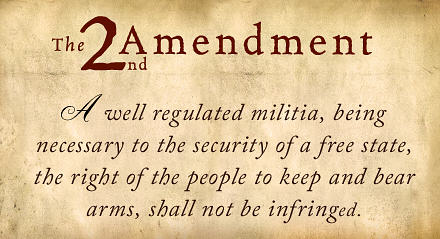

Defense of the Second
Amendment Falls Short
Conservative Defense of the Second Amendment Falls Short: Needs-Based
Defense No Longer Sufficient to Preserve Citizens' Right to Self-Defense
By Bob Barr. February 1, 2021
The Second Amendment stands at a critical crossroad in America. The future of gun rights in America will likely be decided not decades from now, but within the next few years. It is imperative that conservatives, in particular, who historically have been strongly supportive of the right to keep and bear arms, understand not just the practical benefits to our society from a robust Second Amendment, but the philosophical foundations of gun rights as premised on the protection of our G-d-given, natural rights. Only with this well-armed, well-rounded expertise will supporters of the Second Amendment be properly equipped to mount a successful defense of such rights that increasingly are in danger from activists and politicians of all stripes and at all levels.
An Overview
A primary reason why America is at such a pivotal point with gun rights is the inaction of the United States Supreme Court. Since its first major Second Amendment case of the modern era in 1939 (US v. Miller, 307 U.S. 174 (1939), the Supreme Court waited more than 70 years before substantively addressing the scope of the Amendment. In 2008, the Court issued a striking, albeit limited, victory for the right to keep and bear arms when, in District of Columbia v. Heller (U.S. 570 (2008), by a bare majority, it held that the Second Amendment in fact protects an individual right, striking down a District law banning the possession of operable firearms in the home. The Court expanded on its Heller decision two years later in McDonald v. Chicago (U.S. 742 (2010), applying its holding beyond the District of Columbia to all 50 states through the Fourteenth Amendment. Since these cases, however, the Supreme Court has largely returned to its preferred state of quiescence with respect to the Second Amendment (Caetano v. Massachusetts (2016).
In the absence of a Second Amendment legal framework going beyond the barebones structure outlined by Heller and McDonald, lower courts, as well as state and local governments, have been left to their own devices in interpreting and applying these foundational cases. The results have been varied and inconsistent. Some states have removed barriers to the exercise of the right to keep and bear arms, going so far as implementing “constitutional carry,” in which the Constitution is considered the only “license” needed to carry a firearm outside one's domicile (Constitutional Carry Laws). Other states have gone in the opposite direction, severely restricting the carrying of firearms outside the home. Until the Supreme Court returns to the question of the Second Amendment and definitively clarifies its earlier rulings in Heller and McDonald, this patchwork of gun laws will continue to exist across the nation, vexing both gun rights advocates and everyday gun owners seeking to exercise their Second Amendment rights.
Conservatives would be wise, however, not to place trust entirely on the courts as the battle over gun rights plays out.
..... 
This is a lengthy and highly detailed analysis of the state of the 2A, and is well deserving of a full read.
"Conservatives must remember that the Constitution of the United States and the rights reflected therein are rights bestowed on citizens not by the grace of government, but by the hand of G-d and the essence of nature. The responsibility is not on citizens to prove they need or deserve these rights and freedoms, which, by default, are theirs to enjoy."
![]()

























